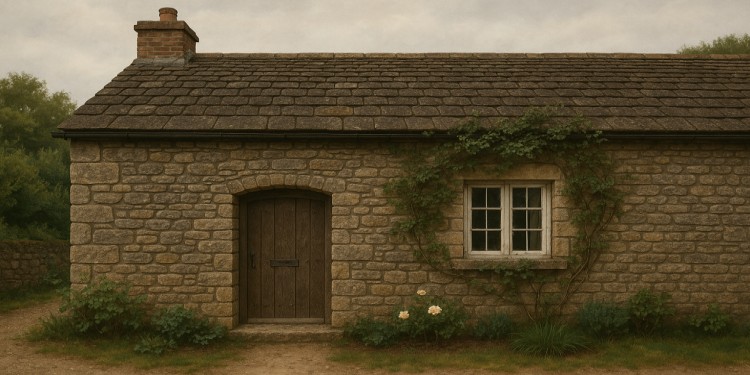Flagstone has earned its place as a favorite material for both homeowners and landscape professionals. With its rustic charm, natural texture, and impressive durability, flagstone brings a unique blend of beauty and function to outdoor spaces. Whether you’re building a patio, walkway, or garden path, this versatile stone offers an unmatched aesthetic that complements both traditional and modern styles.
What Is Flagstone?
Flagstone is a generic term for flat, sedimentary rocks that are split into layers and used for paving. Typically made of sandstone, slate, or limestone, flagstone is characterized by its irregular shape and earthy tones. It’s commonly used for outdoor surfaces thanks to its strength, non-slip texture, and weather resistance.
The stone is often sourced in large slabs and then either left natural or cut into more uniform pieces, depending on the desired look. No two pieces are exactly alike, which makes flagstone installations rich in visual texture and individuality.
Popular Uses for Flagstone
Flagstone is one of the most adaptable natural stones in landscaping and hardscaping. Its flat surface and rugged charm make it ideal for a wide range of applications:
- Patios: A flagstone patio adds a rustic, organic feel that blends seamlessly into garden settings.
- Walkways: Irregularly shaped stones laid in a stepping-stone pattern create charming garden paths or side yard walkways.
- Pool Decks: The stone’s natural texture offers slip resistance, making it a safe and attractive option around water features.
- Fire Pits: Flagstone is fire-resistant, making it a durable base for outdoor fire pits or fireplaces.
- Retaining Walls: When cut thicker, flagstone can be stacked to create low retaining walls or garden borders.
Its versatility allows it to be used alone or combined with other materials like brick, gravel, or pavers to create layered, custom outdoor designs.
Types of Flagstone
While “flagstone” refers to the shape and use of the stone, it can be composed of different rock types, each with its own characteristics:
- Sandstone: Available in warm, earthy colors like red, brown, and tan. It’s porous and softer, making it easy to work with, though slightly less durable over time.
- Slate: Known for its rich color palette, including blues, grays, and greens. Slate is dense and weather-resistant, ideal for cooler climates.
- Limestone: A pale-colored stone that ages well and provides a soft, muted tone. It’s more suitable for low-traffic areas.
Each type offers unique visual appeal and performance properties, so the choice often comes down to the local climate and intended use.
Advantages of Using Flagstone
Flagstone isn’t just beautiful—it’s also a practical and environmentally friendly option. Key benefits include:
- Natural Beauty: With its varied colors and textures, flagstone adds an organic, upscale appearance to any outdoor space.
- Durability: Flagstone can withstand heavy use, temperature fluctuations, and moisture, making it a long-lasting investment.
- Slip Resistance: The natural cleft surface provides excellent traction, making it safer for walkways and pool areas.
- Low Maintenance: Once installed, flagstone requires minimal upkeep—occasional sweeping and resealing will keep it looking its best.
- Eco-Friendly: As a natural material, flagstone blends harmoniously into the environment and supports sustainable building practices.
Installation Methods
Flagstone can be installed using several methods, depending on the desired look and functionality:
- Dry Laid: Stones are set directly onto a base of compacted gravel and sand. This approach allows for drainage and is flexible in freezing climates.
- Mortared: Stones are set in mortar over a concrete base, creating a more formal and permanent surface, ideal for patios or high-traffic areas.
Dry laying is typically easier and less expensive, while mortaring ensures longevity and a more polished appearance. For DIYers, the dry-laid method is often the preferred approach due to its forgiving nature and flexibility.
Maintaining Your Flagstone Surface
While flagstone is relatively low maintenance, a few simple care steps can extend its lifespan and preserve its appearance:
- Sweep regularly to prevent buildup of debris and moss.
- Clean with mild soap and water; avoid harsh chemicals that can damage the stone.
- Seal the surface every few years to enhance color and resist staining (especially for porous varieties like sandstone).
Routine inspection for cracks or shifting stones ensures early repairs and prevents more extensive damage down the road.
A Natural Touch That Lasts
Whether you’re designing a serene garden retreat or an entertainment-ready patio, flagstone brings lasting beauty and natural charm to your landscape. With its broad range of applications, earthy elegance, and impressive durability, it’s no wonder flagstone remains a top choice for homeowners and designers alike.
If you’re ready to upgrade your outdoor space with timeless style, consider flagstone as your foundation—it offers both the look and the longevity your project deserves.
You may also like:
 Why You Should Put a Silver Coin in Water
Why You Should Put a Silver Coin in Water
Similar to Morphine: The Best Natural Painkiller That Grows in Your Backyard (Video)
7 Chicken Mistakes You Should Never Make
The Lost Superfoods: Book Review
Better Than Walmart: Stores To Get Survival Foods For a Bargain





















